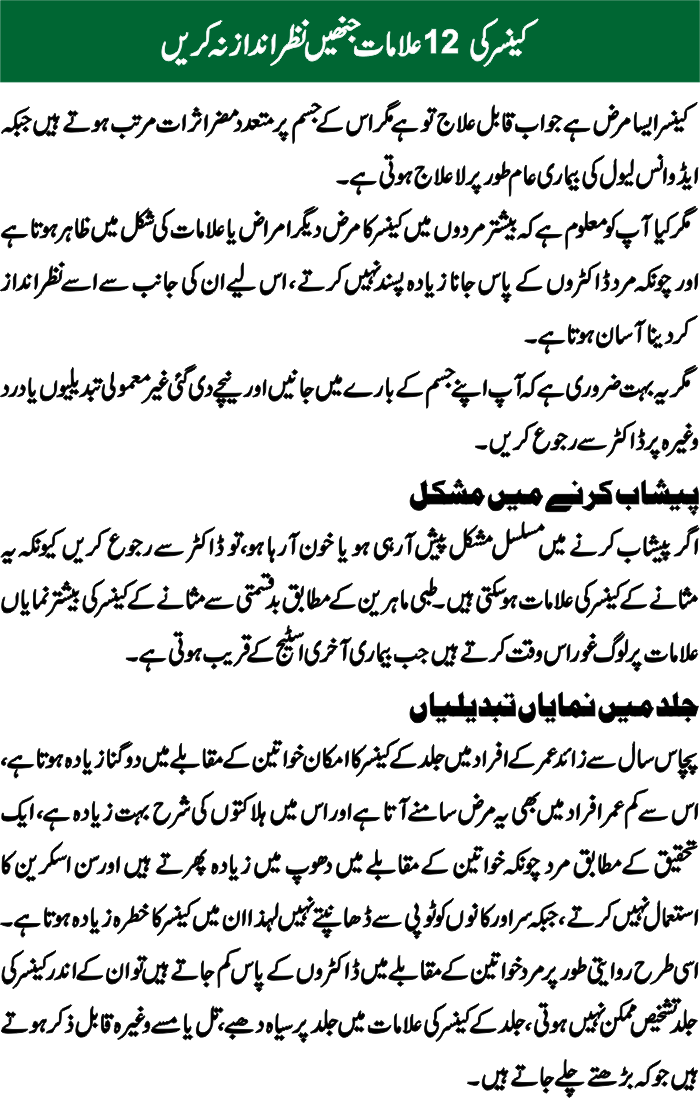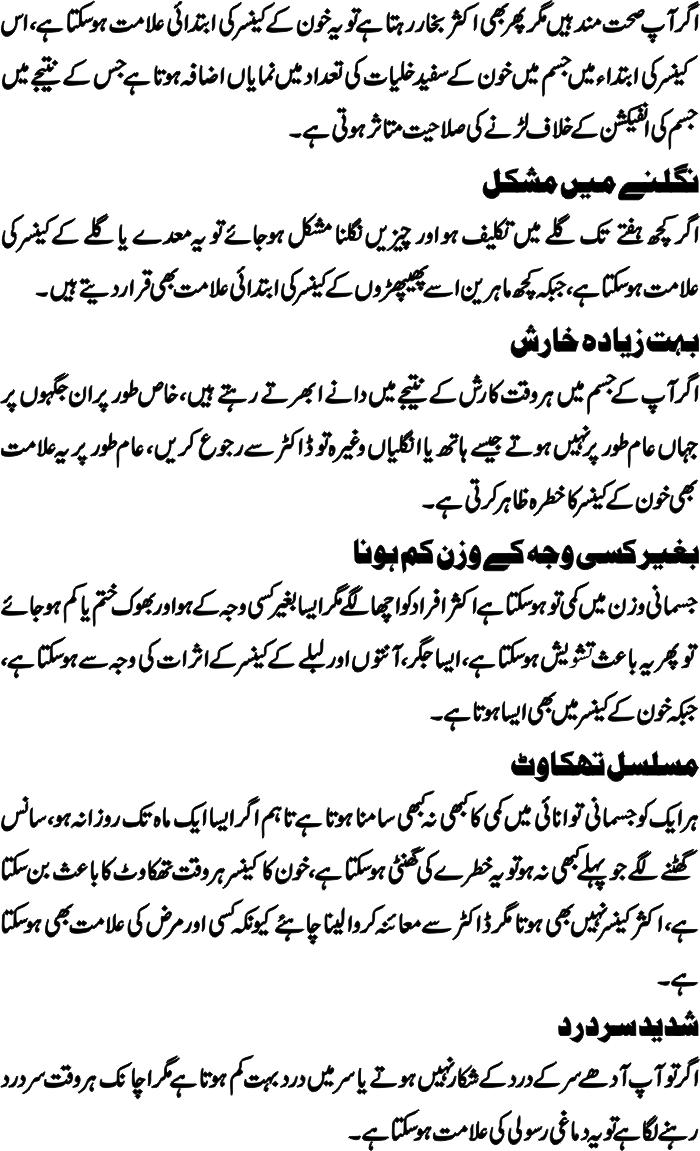Cancer is the uncontrolled growth of abnormal cells anywhere in a body. There are over 200 types of cancer.Anything that may cause a normal body cell to develop abnormally potentially can cause cancer; general categories of cancer-related or causative agents are as follows: chemical or toxic compound exposures, ionizing radiation, some pathogens, and human genetics.
Cancer symptoms and signs depend on the specific type and grade of cancer; although general signs and symptoms are not very specific the following can be found in patients with different cancers: fatigue, weight loss, pain, skin changes, change in bowel or bladder function, unusual bleeding, persistent cough or voice change, fever, lumps, or tissue masses.
Although there are many tests to screen and presumptively diagnose cancer, the definite diagnosis is made by examination of a biopsy sample of suspected cancer tissue.

Cancer staging is often determined by biopsy results and helps determine the cancer type and the extent of cancer spread; staging also helps caregivers determine treatment protocols.
In general, in most staging methods, the higher the number assigned (usually between 0 to 4), the more aggressive the cancer type or more widespread is the cancer in the body.

Staging methods differ from cancer to cancer and need to be individually discussed with your health care provider. Treatment protocols vary according to the type and stage of the cancer.
Most treatment protocols are designed to fit the individual patient’s disease. However, most treatments include at least one of the following and may include all: surgery, chemotherapy, and radiation therapy.

There are many listed home remedies and alternative treatments for cancers but patients are strongly recommended to discuss these before use with their cancer doctors.
The prognosis of cancer can range from excellent to poor. The prognosis depends on the cancer type and its staging with those cancers known to be aggressive and those staged with higher numbers (3 to 4) often have a prognosis that ranges more toward poor.
